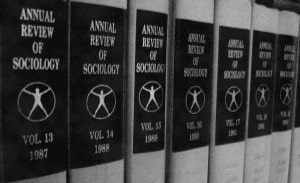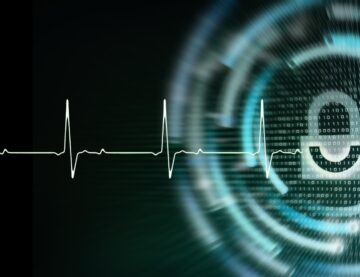Subscribe to our newsletter
In Defence of Electronic Journals: Why Scientists Process Information Differently to Law Students

Last Saturday, the latest issue of Against the Grain dropped through my letterbox, having made the long journey from the editor’s desk in South Carolina to my office in Edinburgh. The theme of April’s issue is ‘disappearing print stacks’ and there are several great articles that make for an interesting read.
Co-director of the Science Libraries Division at the University of Chicago, Andrea Twiss-Brooks’ article on the use of robotic storage to maximize shelving capacity, reminds me of one of my favorite pieces of victorian futurism; Charles Cutter’s vision of the Buffalo Public Library in 1983. Cutter predicted that you could order a book from the stacks with a ‘keyboard’ – and he certainly wasn’t far off. Fast forward to today, the University of Chicago are one a growing number of libraries that are doing almost exactly that, albeit with robots rather than human runners.
An interesting aspect of this transformation, one that could be easily overlooked, is the effort that went into selecting which books would be stored robotically. Twiss-Brooks explains that collections are selected not only by which ones would have the least effect on research and teaching (presumably collections that supported courses that are no longer taught, or research that is no longer active at the institution), but also, to quote from the article:
“that selections could be easily explained to library users, as well as providing a large volume of material that could be quickly identified and processed in a timely fashion.”
This nuanced approach to selecting which service is appropriate for which content underlines the importance of understanding the various factors that affect researchers’ needs, their usage patterns, and their relationship to specific content.
Research Librarian Audrey Powers from University of South Florida explores this concept in her article entitled, ‘’No books, but Everything Else.’ Powers discusses some of the benefits and risks of the movement towards replacing physical collections with other types of services, from careers guidance to coffee shops. Powers also references a number of peer-reviewed studies that investigate the differences in reading experience and comprehension between physical volumes and ebooks. One article that she cites is by Anne Magen of the National Center for Reading Education and Research at the University of Stavanger in Norway. Magen compared reading comprehension in students who read linear texts in both electronic and paper form, finding that students who read texts on paper retained information better. The idea that paper is superior for learning is supported by some good science, as Powers rightly points out, and there’s evidence that students simply prefer physical textbooks to their electronic equivalent.
Just as there’s a danger of overlooking the details of the selection criteria that the University of Chicago applied when building their automated storage and retrieval system, there’s a detail in this argument that’s important to note. In all of these studies, at least as far as I can tell, researchers compared recall effectiveness for linear texts. This is, of course, a vitally important aspect of scholarly reading, particularly in the humanities, law and similar subjects, and particularly for students in those areas. As a former scientist, however, I’d like to urge caution when extending those findings to scientific journals.
When I first began reading scientific journal articles, I did try to read from title to conclusion, but I soon learned better. As a physicist and more so as a biologist, I hardly ever read linearly and how I read the article depended on why I’d pulled it in the first place. If, for example, I was looking at a paper because I was keeping up to date with my field, I’d read the abstract (or at least part of it). If it was interesting I’d read the conclusion, then perhaps I’d look at the figures and maybe read the results section. The article had to be really good and highly relevant for me to actually do anything more than scan the discussion and introduction sections. If, on the other hand, I was reading the article because I was following a chain of information from a review article, or even another research paper, that reference would generally refer to a specific result or finding, which I would zero in on then more often than not, put the paper to one side.
In other words, I (and almost all of the scientists that I’ve ever discussed this with over the last 15 years) read scientific articles in an extremely non-linear (and rapid) way. I’m sure that some would say that my reading patterns weren’t very scholarly, and perhaps they’re weren’t, but I think that they’re representative. I think that scientists treat information in a very workmanlike fashion, discovering facts and then moving on. This style of reading is massively accelerated by electronic journals and the technologies that can go along with them. Instant access to content online from anywhere on or off campus, hyperlinks to accelerate personal acquisition, and the ability to electronically interrogate content all support this type of interaction with literature. I personally would hate to go back to the old days of photocopying one article at a time, stuffing them in a folder and taking them home for the weekend only to realize that I’d missed one important piece of information.
I’m not writing this to disagree with Power’s excellent article in Against the Grain, in fact, quite the opposite. Powers argues that it’s important to thoroughly research and understand both what library users want and how they process information so that their real needs can be effectively met. I completely agree. In many situations, physical media offer the best way for researchers to absorb information. This idea is attractive to those of us that value the physicality of reading. It’s for that reason that I myself offer my own note of caution. The reading patterns and information needs of scholars vary according to discipline, type of content, career stage and activity. In many cases, particularly in science, electronic collections don’t represent a trade-off between space and utility but offer the best solution all around.



